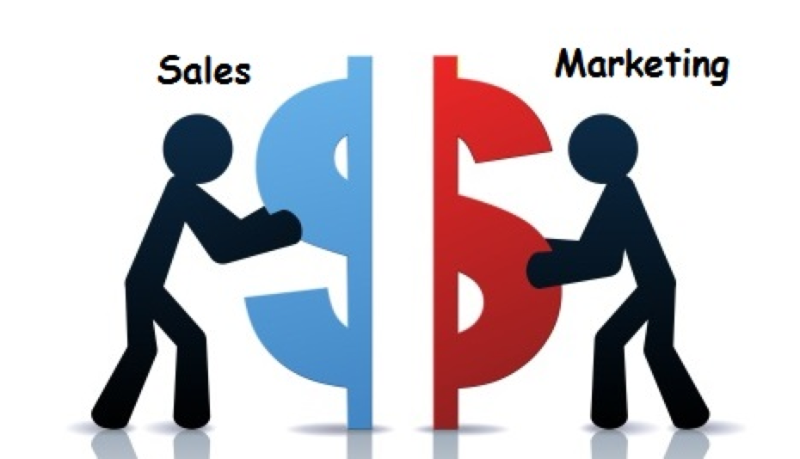It’s Time for Sales and Marketing to Put Aside Their Differences and Find Common Ground
They’re both in this together for the long haul, after all
It’s no one person’s fault that sales and marketing have grown apart within recent years. These departments play fundamentally different roles within organizations, and over time, this has led to a natural division of processes, goals and even the technologies used.
Decision makers are to blame, however, when they allow this distance to stand in the way of seamless customer experiences that generate business. In fact, 60 percent of respondents believe misalignment between sales and marketing could damage financial performance, according to a global study from LinkedIn and the Content Marketing Institute.
Originating in the Mad Men era, businesses used consumer awareness to measure marketing success. For digital media, this meant “eyeballs” or views. The greater the brand awareness during this buyer’s journey, the greater the chance of purchase.
In today’s world, however, awareness alone is never enough. Marketing spend must be directly related to increased sales, otherwise marketers cannot prove their value. In reaction to this, digital marketing and marketing automation systems now provide marketers with data, analytics and increasingly granular insights into which content will be most effective at motivating prospects to actually buy, not just create content that generates buzz.
On the other hand, sales measure success via closed deals and, for leadership, in metrics like average deal size, average sales cycle and the time it takes to ramp up new reps. Marketing is ideally positioned to help sales reach these goals, but unfortunately, many marketers lack the data required to generate insights about the effectiveness of their content once sales is engaged with a customer. As a result, marketing spends large amounts of money with no way to measure a return on that investment or to gain insights into what is most effective during the sales process.
Each department measures success by different metrics, so a communication breakdown is inevitable even when collaboration intentions are good. Sales sees marketing content as too abstract or not relevant, while marketing feels sales underutilizes content intended to help them broaden their message with prospects.
In both scenarios, nothing is achieved except general discontent between sales and marketing, a disastrous scenario if you’re trying to make money.
To get marketing and sales back on track, organizations should start with frequent, honest communication between departments and at all levels. This should be apparent to everyone involved, of course, but it can be tough to execute as organizations scale, whether in size, geography or commerce channels.
To overcome these hurdles, consider doing the following.
Invest in best-of-breed technologies that support collaboration
Sales teams are out in the field while marketing teams are back at the office generating new ideas. If marketers don’t have the technology to make instant updates or improvements to sales collateral, it can take a long time for those changes to reach sales representatives and prospects.
Sales tech serves as an important platform for marketing to stay in constant contact with the people who are moving deals in their territories. Marketers require technology that measures the effectiveness of content so that they can invest in collateral that most impacts revenue. Improved sales technology can track how often a customer engages with a certain piece of content, how often a salesperson engages prospects with that content and how these occurrences correlate with closed deals or increased revenue.
Reinforce the good, collaborative feelings technology inspires with cross-departmental check-ins, lunches and happy hours.
Revisit success techniques and metrics
It’s almost impossible for marketing and sales to stay aligned when their goals and language differ. Engagement is a great metric for both departments to rally around, as improved engagement typically means improved buyer interest, a goal both parties should agree on.
It’s also important to reimagine how to best achieve new goals like engagement with modern buyers in mind. For example, top solutions armed with new offerings like AR inspire an immersive sales experience that leaves a positive impression with prospects.
In today’s world, marketing and sales must deliver a better buyer experience. This includes providing content that gives buyers direction, offers greater insights and leads prospects to places they never expected. However, to achieve this outcome, both teams must see eye to eye. And this is possible, but sales and marketing must understand that they’re in this together for the long haul.
Article written by: Theresa O’Neil
0

